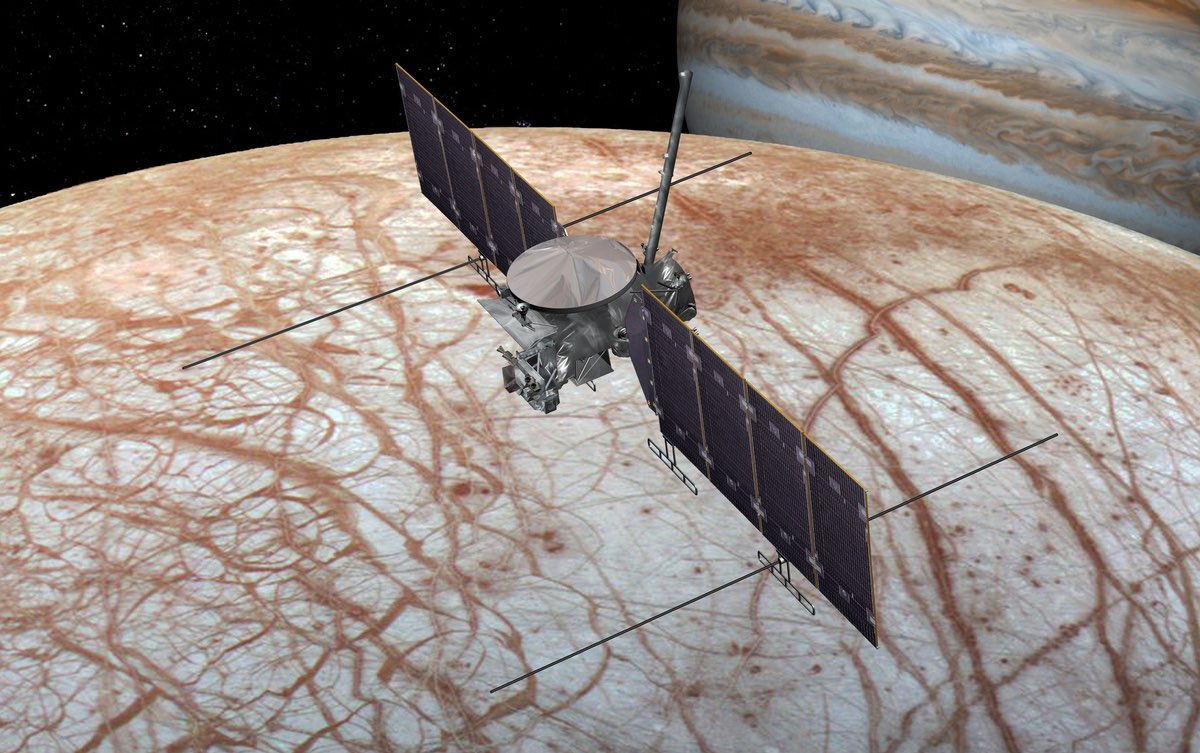WASHINGTON — A long-running debate about how to launch a multibillion-dollar NASA mission to Jupiter is now further complicated by potential technical issues involving one of the vehicles.
At an Aug. 17 meeting of NASA’s Planetary Science Advisory Committee, Lori Glaze, director of NASA’s planetary science division, said the Europa Clipper mission had recently discovered compatibility issues involving the Space Launch System, the vehicle preferred by Congress to launch the spacecraft.
“There have been some issues that have been uncovered just recently,” she said of the use of SLS for Europa Clipper. “We are in a lot of conversations right now with human exploration and others within the agency about what kind of steps we can take going forward.”
She did not elaborate on the compatibility issues regarding SLS. Such issues, industry sources say, likely involve the environment the spacecraft would experience during launch, such as vibrations. That environment would be very different for Europa Clipper, a relatively small spacecraft encapsulated within a payload fairing, than for the Orion spacecraft that will be the payload for most SLS launches.
“We are currently working to identify and resolve potential hardware compatibility issues and will have more information once a full analysis has been conducted,” NASA spokesperson Alana Johnson said in an Aug. 18 statement to SpaceNews. “Preliminary analysis suggests that launching Clipper may require special hardware adjustments, depending on the launch vehicle.”
She said the mission was working with NASA’s Human Exploration and Operations Mission Directorate “to mature the launch vehicle analyses” by the time of Clipper’s critical design review, currently scheduled for December.
How to launch Europa Clipper, a decision usually made by NASA for its science missions based on technical merits and cost, has been the subject of an unusually protracted and political debate. Other than the recent compatibility issues, SLS was long the preferred choice on a technical basis, since it allowed Clipper to fly a direct trajectory to Jupiter so that it arrived within three years of launch. Alternative vehicles, like United Launch Alliance’s Delta 4 Heavy or SpaceX’s Falcon Heavy, would instead require the use of gravity assist flybys to get to Jupiter, adding several years to the flight time.
Congress has mandated the use of SLS for Europa Clipper, as well as a follow-on lander mission, including language to that effect in appropriations legislation for several years. NASA, though, has asked for relief from that requirement more recently on cost grounds. In the agency’s fiscal year 2021 budget proposal, NASA argued that the use of a commercial vehicle “would save taxpayers over $1.5 billion compared to an SLS rocket.”
Another issue is the availability of the SLS. The first three SLS rockets are earmarked for the Artemis program, including the uncrewed Artemis 1 mission launching no earlier than late 2021, the Artemis 2 crewed test flight in early 2023, and the Artemis 3 lunar landing mission by the end of 2024. Thus, the earliest an SLS would be available for launching Europa Clipper would be 2025, even though the spacecraft itself will be ready to launch by 2024.
Glaze noted that availability of an SLS before 2025 “is not guaranteed” given demand for the vehicle for the Artemis program. “The launch vehicle remains very uncertain,” she said. “It is still a concern and an increasing concern.”
Europa Clipper has, for now, been keeping open both the option of launching on SLS as well as on a commercial alternative. Doing so, Glaze said, costs the mission about $30 million a year, but will increase if NASA doesn’t finalize the launch vehicle by the time of December’s critical design review.
The House version of a fiscal year 2021 spending bill would give NASA some wiggle room. The bill continues to call for launching Europa Clipper on SLS, but only “if available,” a provision not included in appropriations bills in past years that required the use of SLS without exception.
Despite the new language, one House appropriator continued to call for using SLS for Europa Clipper. “NASA must increase the pace of SLS production to ensure an SLS is available for the Europa missions and other future science missions, in addition to meeting all the human exploration needs,” said Rep. Robert Aderholt (R-Ala.), ranking member of the commerce, justice and science appropriations subcommittee, during a July 8 markup of the bill.
